Cartoon Set 1: Trials and Execution
Cartoon Set 2: First Violence
Cartoon Set 3: Last Battle & Surrender

It was in the township of Acton on Sunday, Aug. 17, 1862, that four Indians returning from a fruitless hunt started arguing over a few hen's eggs. The eggs had been taken from a nest located near the fence on the Robinson Jones farm.
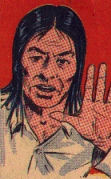
One of the Indians advised against taking the eggs because they belonged to the farmer. Another accused him of being afraid because he was a coward and feared the white men.
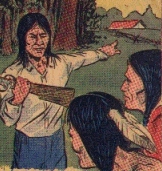
This wasn't true, he answered, boasting that he hated the white men and had so little fear of them that he would kill one that very day if the others were brave enough to accompany him.
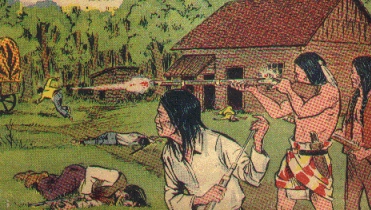
Before they fled the peaceful settlement not just one man but three men, a woman and a 15 year old girl were murdered.
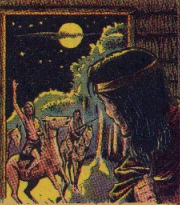
After telling of their horrible deed they rushed from their village on Rice Creek to the house of Little Crow. Once a powerful chief, Little Crow had fallen into disfavor with his people because of his dealings with the white men. This was his chance to again prove himself leader of the Sioux.
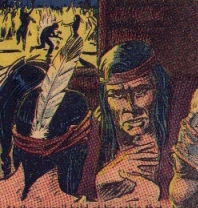
At the council held in his cabin that night he reminded the other chiefs that because women had been killed the white men would take a terrible revenge upon the people. It was decided then and there that they must drive out all the settlers with Little Crow as their leader.
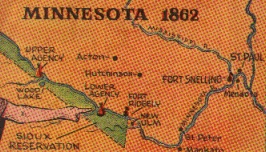
The first objective of the Sioux uprising was the Lower Redwood agency with its well-supplied stores and numerous shops and buildings. "Kill the traders, loot the stores and burn the buildings!" Little Crow ordered.
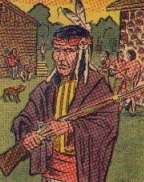
At dawn on Monday, Aug. 18, 1862, the Indians gathered at the agency in small groups near each business and home.

The most hated man at the agency, as far as the Indians were concerned, was Andrew Myrick. He had cheated them in the past, but he was the trader who refused them credit, saying they should eat grass if they didn't want to starve.
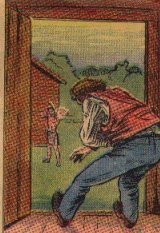
So it's not suprising that the first shot of the raid was fired at Myrick's store, killing the manager, James W. Lynde, as he stood in the doorway.
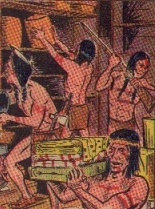
The Indians were afraid to go after Myrick, who was hiding in his quarters above the store, because they thought he was armed. Instead, they looted the store and prepared to burn the building with him in it.
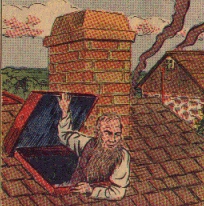
Myrick had but one means of escape--out the trap door in the roof and down a lightning rod on the back of the building. The steep brush-covered banks of the Minnesota river were but a short distance from the store.
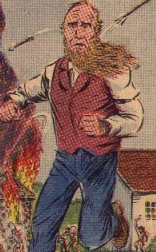
Amid shot and flying arrows he raced for the river. If he could reach it, he would be able to make it to Fort Ridgely and the protection of the soldiers.
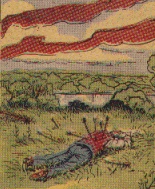
Unfortunately, he was hit before he reached cover. Several days later, when his arrow pierced body was recovered for burial, it was discovered that his mouth had been stuffed with grass.
